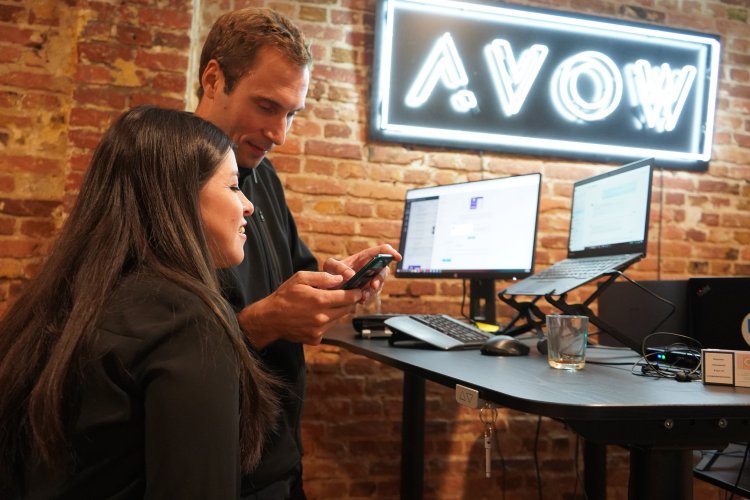App ecosystem has become a crowded and highly competitive space over the last decade and a half. Over 218 billion apps were downloaded in 2020, according to App Annie. And while usage is still largely concentrated on Apple and Googleâs app stores, in swiftly-developing areas like South East Asia, this is changing. In any advertising campaign, identifying the right audience to target is crucial. Marketing mobile gaming apps requires a highly personalized approach, as the gaming vertical involves a much more emotional and engaging experience than other categories such as utility apps.
Looking Beyond Ad Formats: Combining Appographic Targeting and OEMs
By. Robert Wildner – Co-Founder & CEO at AVOW
In any advertising campaign, identifying the right audience to target is crucial. Marketing mobile gaming apps requires a highly personalized approach, as the gaming vertical involves a much more emotional and engaging experience than other categories such as utility apps. More so than other apps, they rely on recommendations from other players. But app developers have little control over actual word-of-mouth recommendations. So how can marketers enhance their targeting beyond traditional demographics such as demographic profile, device or operating system?
Additionally, the app ecosystem has become a crowded and highly competitive space over the last decade and a half. Over 218 billion apps were downloaded in 2020, according to App Annie. And while usage is still largely concentrated on Apple and Google’s app stores, in swiftly-developing areas like South East Asia, this is changing. More affordable devices with their own app stores (OEMs – original equipment manufacturers) such as Chinese giants Huawei, Xiaomi and Vivo are fast gaining traction.
Advertising formats (ad formats) have evolved over time, ranging from the early days of banner ads to interstitials and native ad formats. These all remain effective formats, but particularly for gaming, deepening the level of targeting provides a much more cost-effective approach by targeting users based on their unique app interests – using appographic targeting.
In this guide, we’ll explain how appographic marketing and access to OEMs can help fuel your mobile app marketing strategy to reach new, and engaged, customers.
Appographic marketing
App users are an extremely diverse group of people. Consider the example of a young male, age 20-24, with a Xiaomi device. Demographic profiling might recommend adventure games, role-playing games (RPGs) or sports games. In reality, however, not all 20-24 year-old men are the same. How much better would it be if you also knew this user was much more into casual games, or fashion-related games, something more often attributed to female players?
Knowing this information would allow you to promote your fashion game app to the users who are most likely to install it and, most importantly, remain engaged and loyal.
How does it work?
In order to take advantage of appographic targeting, you need access to broad datasets and analytical capabilities to make sense of this data. It’s a simple, two-step process.
- You need to break down your gaming app into various design, interactive and functional elements. For example, suppose your RPG game combines a multiplayer format with medieval-themed design and content, and includes puzzles. These are all elements which can then be used to identify your app.
- The second step involves targeting based on these elements using appographic targeting. By knowing what apps users have on their phones, AVOW is able to track user interests based on the apps they use, how often they engage with them, what ads they click on, and more. Using the example above, users who have a lot of puzzle games and multiplayer games could be more effectively targeted.
Thus the data is used to push apps specifically to these users through both other apps and, in the case of OEMs, directly to the users’ devices. Depending on your intention, adverts can be targeted more broadly (in the case of driving brand recognition) or more narrowly (to acquire more high-value users).
Enhancing reach with OEMs
OEMs (original equipment manufacturers), combined with appographic targeting, provide app marketers with a powerful strategy to reach untapped audiences. So-called alternative app stores such as the Oppo App Market and Xiaomi’s GetApps can be leveraged to achieve better exposure and higher user acquisition at a lower CPI (cost-per-install). These app stores provide you access to a significant proportion of the worldwide market. Xiaomi has over 500m users, Oppo operates in over 40 countries worldwide, offering enticing new audiences to app marketers. These alternative app stores offer their own ad formats and are able to target users directly on their device, giving marketers a diverse range of options to meet previously inaccessible users.
Reaching your ideal users relies on a number of different marketing techniques. Diverse user interests and the increasing complexity of the app ecosystem are just two of the challenges out there. However, using appographic targeting and connecting with OEMs offer two lucrative paths to meet these challenges.
















